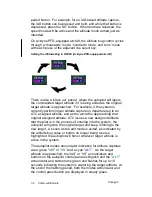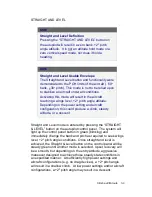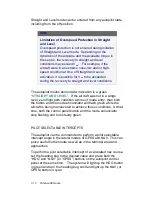
4-10
Approach Procedures
BACK COURSE APPROACHES
Always ensure the front course is set in the Selected Course
window. The system will recognize it is on a back course when
the VHF receiver is locked onto a valid signal and there is a
sufficient difference between aircraft heading and the selected
course. Ther
e is no “REV” or similar button in a DFC90 autopilot.
A “BC” annunciation will be added to the HDI (LDI in an Aspen),
the HDI (or LDI) and CDI indicators will display correct sensing,
and the autopilot will turn in the proper direction.
□
Ensure the Primary Nav LSK is set to a VHF source and
tuned to a LOC/ILS
□
Ensure the front course is set in the Selected Course
window
□
Press either the “NAV” or “APPR” button on the autopilot
control panel (either will work fine)
□
Note that the “NAV” and “APPR” button are lit in green on
the autopilot control panel
□
Note that “
NAV APPR
” is displayed in green in the
autopilot modes annunciator section of the display
MISSED APPROACH
Prior to going missed approach, disconnect the autopilot, apply
go-around power, ensure the aircraft is trimmed for the power
setting, establish a climb attitude and use the autopilot to
smoothly execute the assigned climb-out or published missed
approach procedures. A recommended technique is as follows:
□
Set the altitude bug to the desired altitude
□
Press the “HDG” or “NAV” button on the autopilot control
head, depending on missed approach instructions
□
Press the “ALT” and “VS” buttons on the autopilot control
head simultaneously to command an altitude capture
□
Press the “OBS” button on the GPS Nav-Com to continue
the coupled missed approach
Change 3






























